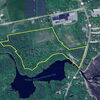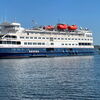Processing Your Payment
Please do not leave this page until complete. This can take a few moments.
- News
-
Editions
-
- Lists
-
Viewpoints
-
Our Events
-
Event Info
- Women's Leadership Forum 2025
- On the Road with Mainebiz in Bethel
- Health Care Forum 2025
- On The Road with Mainebiz in Greenville
- On The Road with Mainebiz in Waterville
- Small Business Forum 2025
- Outstanding Women in Business Reception 2025
- On The Road with Mainebiz in Bath
- 60 Ideas in 60 Minutes Portland 2025
- 40 Under 40 Awards Reception 2025
- On The Road with Mainebiz in Lewiston / Auburn
- 60 Ideas in 60 Minutes Bangor 2025
Award Honorees
- 2025 Business Leaders of the Year
- 2024 Women to Watch Honorees
- 2024 Business Leaders of the Year
- 2023 NextUp: 40 Under 40 Honorees
- 2023 Women to Watch Honorees
- 2023 Business Leaders of the Year
- 2022 NextUp: 40 Under 40 Honorees
- 2022 Women to Watch Honorees
- 2022 Business Leaders of the Year
-
-
Calendar
-
Biz Marketplace
- News
-
Editions
View Digital Editions
Biweekly Issues
- April 21, 2025 Edition
- April 7, 2025
- March 24, 2025
- March 10, 2025
- Feb. 24, 2025
- Feb. 10, 2025
- + More
Special Editions
- Lists
- Viewpoints
-
Our Events
Event Info
- View all Events
- Women's Leadership Forum 2025
- On the Road with Mainebiz in Bethel
- Health Care Forum 2025
- On The Road with Mainebiz in Greenville
- On The Road with Mainebiz in Waterville
- + More
Award Honorees
- 2025 Business Leaders of the Year
- 2024 Women to Watch Honorees
- 2024 Business Leaders of the Year
- 2023 NextUp: 40 Under 40 Honorees
- 2023 Women to Watch Honorees
- 2023 Business Leaders of the Year
- + More
- 2022 NextUp: 40 Under 40 Honorees
- 2022 Women to Watch Honorees
- 2022 Business Leaders of the Year
- Nomination Forms
- Calendar
- Biz Marketplace
Maine poised to leverage ‘blue economy’ opportunities, despite obstacles
 Photo / Courtesy Robert Mitchell, Mook Sea Farm
Farmers from Mook Sea Farm collect oysters as part of the aquaculture industry that is part of Maine’s blue economy
Photo / Courtesy Robert Mitchell, Mook Sea Farm
Farmers from Mook Sea Farm collect oysters as part of the aquaculture industry that is part of Maine’s blue economy
Maine has a long history of sustainable use of its ocean and coastal resources.
The state is "exceptionally well" positioned to take advantage of growing national and international interest in developing the blue economy. But it has yet to clearly identify and prioritize development that can lead to realizing the potential, according to a report published by Maine’s Blue Economy Task Force.
The blue economy is defined as “business sectors that rely on the sustainable use of ocean resources for economic health, improved livelihoods, jobs or ecosystem health.”
Led by the Maine Department of Economic and Community Development, the task force has over 30 representatives from public and private research institutions, businesses, trade organizations, agencies and nonprofits.
Missed opportunities
According to the report, prepared by a South Portland-based consultant, Michael Conathan, Maine is missing an opportunity on which other states are capitalizing. The report cites states such as Washington, Rhode Island, California and Alaska, which have dedicated funding and other resources to develop ocean-related industries and sustainable ocean uses.
“Maine shares many of the traits that have allowed those states to establish and grow economic opportunities, and arguably has advantages over some of them in certain areas,” the report says.
Maine’s efforts to support ocean-related industries have been “disorganized.”
Maritime strengths
The task force identified areas where Maine can capitalize on its maritime strengths, which include a geographic location between the northern European hubs of the blue economy and the markets of the U.S. East Coast, dovetailing with Maine's three deep water ports. The report also cited an existing workforce with a range of related skills, as well as abundant living marine resources for wild capture and cultivated harvest.
There are also significant obstacles:
- Rising waterfront property values.
- Pressures related to affordable housing and services and finding a well-trained workforce.
- Slow and difficult permitting processes as barriers to industry growth.
- As a state with a small population, having relatively few investors, making access to capital a significant barrier to growth.
- The Gulf of Maine is among the fastest warming bodies of water on the planet, and extreme weather events are on the rise, presenting obstacles in the form of damage to coastal infrastructure and shifts in availability of commercially important species.
The task force identified several key sectors poised for growth: commercial fishing and seafood, aquaculture and offshore wind.
Recommendations
Maine can capitalize on the development of its blue economy, the report says.
Recommendations include:
- Establish a Maine Center for the Blue Economy as a unifying cluster-style organization,
- Create a blue economy focus among existing state development and finance programs and prioritize investments in blue economy research, development and commercialization.
- Form a blue economy education and training council to coordinate curriculum and research opportunities.
The report identifies the need to find capital to start or grow a business and to expand successful businesses to serve larger markets as a constraint on potential growth.
Potential sources include state, federal and philanthropic funding, the report says.










0 Comments